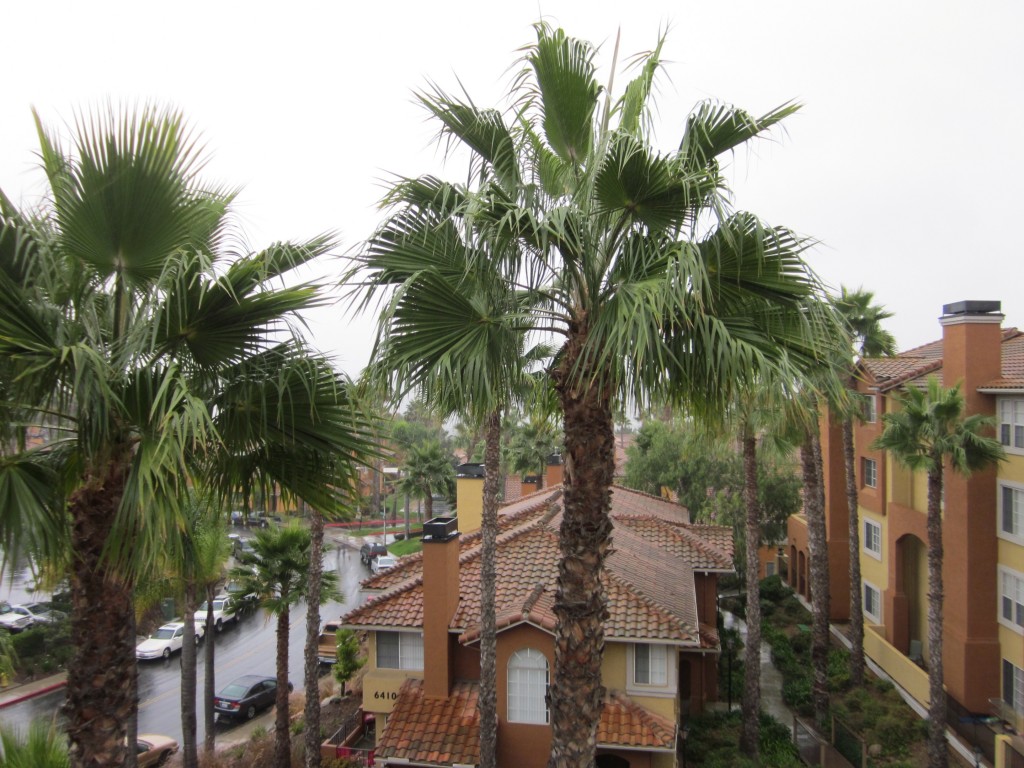“A tree that is unbending is easily broken.”
Lao Tzu
I don’t know if it’s the sound or the sight of them that I love most. From my vantage point, the graceful palms dance to the blustery winds outside the windows. High atop the fourth floor of our apartment we’re eye level to a glistening circle of these emerald beauties swaying from each view. The shushhhhing symphonies of palm fronds and wind lull me into a state of calmness. Boo and Scout curl into quiet cat-atonia next to me as we each watch and listen to the palms leaning and bending in tune to the gusts of wind playing around them. Amazing, I find myself wondering. That they don’t break in half.
What is it about them that makes each so malleable yet so strong? Why don’t they crack from such air born pummeling time and time again? “It’s their flexibility that contributes to their strength,” Ted Safford, Certified Arborist, explains.
The Nature Teacher lesson resonated loud and clear. If palms were rigid and unyielding in structure they would easily be felled from wild winds, “…but,” continues Safford, “…you see palm trees blowing and bending in hurricanes and horrific storms—and yes, some are downed by them, but in all my 35 years of maintaining palms I’ve never seen one break.”
In fact, research has proven that when palm trees are bent to such a degree that they’re practically parallel to the ground from the challenging gusts, their root system actually gets stronger, initiating new opportunities for growth.
I learned that palm trees aren’t really trees at all, but rather from the family of flowering plants—the only order of the monocots called “Arecales.” Ted admits his great affection for palms is not only because of their supple acquiescence to treacherous weather, but he loves their longitudinal simplicity. They don’t have added “baggage”—heavy branches and leaves—to weigh them down. Palms lose their wind-resistant leaves a lot faster than trees lose their branches. Once the leaves are gone in a storm there isn’t much left to catch the wind.
Palm trees also have an extremely flexible, fibrous trunk and a shallow-yet-regenerative root system as compared to a much sturdier tree such as an oak. This bendy ability gives the palm true mobility and wind-sway. The shallow, thinner roots make it easier for the palm to not only fall over rather than snap in half, but to rebuild a root structure yet again.
My goal now is to be more “palm like” in my approach to life. This is something that my Tai Chi teachers taught me as well. When one is coming at you in a mighty attack and you stand rigid, you are easily pushed over. But when you relax your shoulders and ever so slightly move with the punch, the attacker is the one who falls. I’ve seen this happen over and over again in class.
So I must remember all of these lessons: to face adversity, and the inevitable body slams of surprises, setbacks, losses, etc., with the same grace and majesty of a palm tree and a Tai Chi Master. To not stand rigid in fear and ultimately crack under pressure, but rather move in an inner dance-like sway to the wild winds of change. To not be blown-away by situational storms, but do all I can to relax into them and let my flexibility—an acceptance of life the way it is not the way I wish it to be—ultimately be my strength.


You should come to Florida, there are palm trees everywhere! They are not like regular trees. They are very sensitive to weather and it is very easy to kill them if you don’t know how to take care of them.